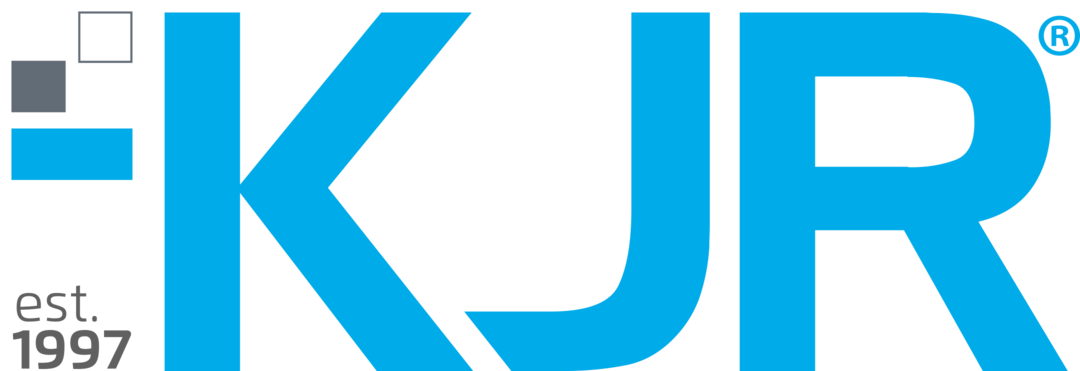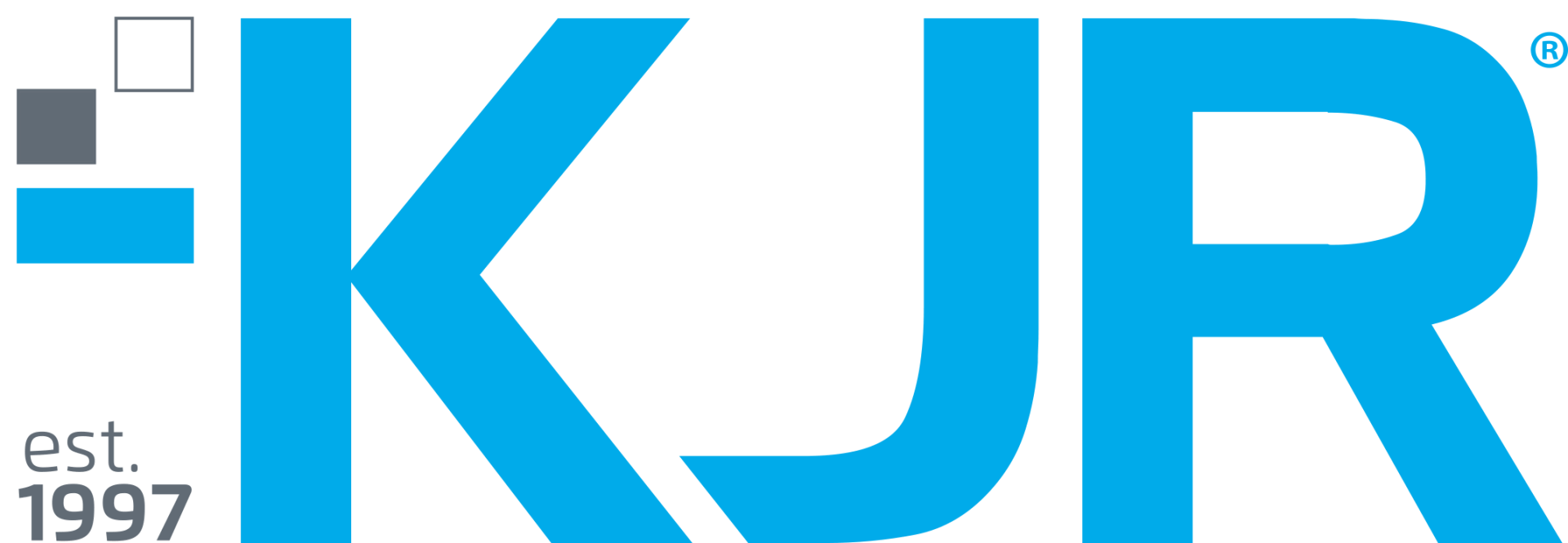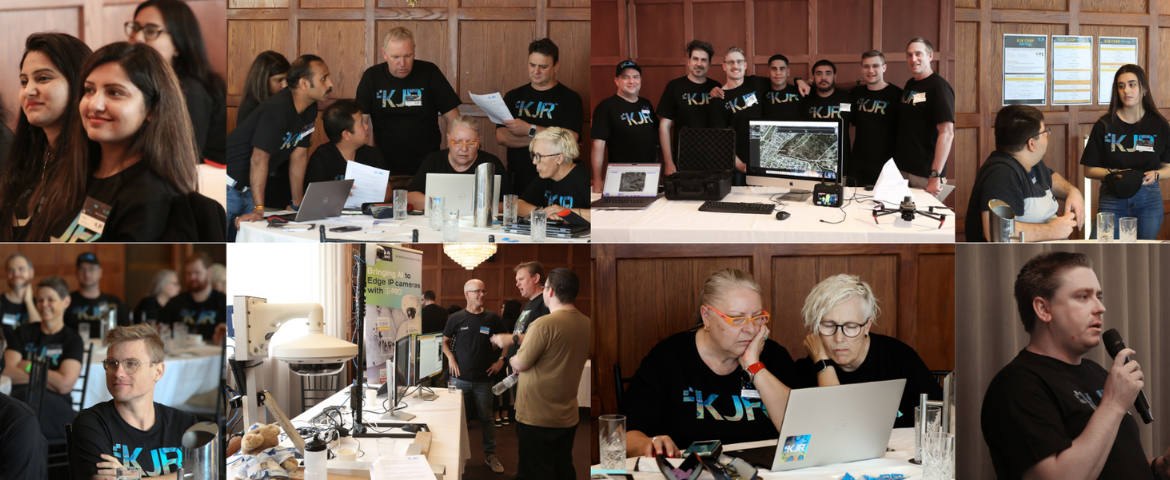5 Top Data Quality Assurance Challenges Facing Defence IT Data quality assurance is incredibly important for ensuring the efficiency, reliability, and effectiveness of defence IT operations. Having inaccurate or poor-quality data could negatively impact military operations and decision-making. Split second decisions in military operations can result in life or death. Hence, having accurate and reliable data is extremely important. Without proper data management, databases can quickly become redundant. So here are five common challenges that the defence industry is currently facing with the quality and maintenance of their data. Data Quality Assurance Challenges Faced in Defence IT Data Silos Quite simply, a data silo is a large conglomerate of data held by a single group or party that isn’t easily accessible to others in the same organisation. These siloes are typically created unintentionally, they tend to naturally appear as an organisation grows. They can quickly become problematic as they grow in size because the data can not be properly utilised. Defence organisations heavily rely on accurate high-quality data when making informed decisions about potential threats. When data and information are not accessible, strategies and decisions aren’t able to be made with all the available data resulting in potentially flawed decision-making. This puts the military organisation at a significant disadvantage when making vital decisions. Inconsistent Data Formats Data inconsistency is when the same data exists in separate locations but is stored in different formats. This causes the data to become unreliable and difficult to properly decipher. This occurs when an organisation is broken into multiple parts, with individuals in each department who treat and interpret data in different ways. So, it is necessary to classify the data and to do so, one must utilise different tools and models. For example, to develop the ‘Natural language Processing classification’ model, KJR used the AWS technology stack within one of their phases. However, exchanging data seamlessly, efficiently, and effectively becomes very difficult without data consistency. In order to combat these challenges, defence organisations should implement standardised practices on how different data should be formatted. This way data can be consistent across all databases. Data Duplication Data duplication happens when a piece of data has a copy made of it, creating two pieces of the same data. This creates a database filled with redundant data that can be utilised by the organisation. Duplicate data will take up large amounts of storage space available in a database, this ends up costing you more money and will give you redundant data. Data duplication can occur as a result of user input error, where an individual may mistakenly enter a data entry more than once, it may also occur from data backups. Without a proper response or plan to combat data duplication, defence organisations may experience large portions of redundant and inaccurate information available to personnel. Data deduplication is a common method of removing duplicate content by eliminating copies of the data, helping to clear storage space within the database. Using this method, KJR is able to fix large defence databases filled with duplicate data. Inaccurate Data The accuracy of data is highly important, without real reliable data it can be difficult to make informed decisions about defence operations. Without standardising data practices and entry, it can be very easy for data to become inaccurate and unreliable. In a defence force environment, inaccurate data could alter major decisions regarding their hardware and backup, having big consequences. This is why it’s vital to keep your data as accurate as possible through good data management. Outdated Data Over time data can begin to rot or become outdated, meaning it’s no longer relevant, reliable, and is now redundant. This is typically caused by poor data management, data hoarding, or a change in data standards. Data requires constant maintenance and regulation to ensure it remains relevant and up to date. Outdated data can result in wrongful decision-making and significantly impact defence IT systems and security. KJR fixes this by setting up policies and standardisations of data entry, as well as using methods to remove redundant data. Key Takeaways Poor data management without proper data quality practices can lead to redundant data, potentially negatively impacting combat operations, logistics, system development, and most importantly people’s lives. If you are looking to ensure your data is high-quality, relevant, and reliable then contact KJR today to discuss how we can help you. For 25 years we have been leading in software quality assurance and risk management for defence IT.
The Role of Automation in Software Quality Assurance for Government Processes Automation tests for software quality assurance have increasingly become more common to deliver strong products. Particularly for governments always under pressure to perform efficiently and serve better. They must always stay on top of their game by being strategic in their approach, embracing new technologies when needed and acting and reacting at scale. Benefits of Automation Software Testing vs Manual Testing for Governments The automation testing market expects to grow by USD 52.7 billion by 2027, having a CAGR of 16.4% during the time period. With private sectors already incorporating automation within their tasks, the public sector must follow suit. Governments need automated tests to perform the same steps precisely every time and record the details to get consistent data. Compared with manual testing, automated tests can handle complex features more efficiently. On the other hand, manual testing not only enables personnel to assess software by functionality, but also the overall user experience of using it. It’s difficult to replicate this with automated software testing. Some test scenarios may be too complex or difficult to efficiently automate, making it a lot more realistic to conduct manual tests instead. Keep Up with Updated Malware In the digital technology era, malware and cyberattacks constantly threaten federal agencies. Even minor software updates can leave them exposed, putting extra burden on the developers to find and minimise these risks as they release new software. Through software automation testing, developers can detect errors while the code is being written, and identify the bugs and problems before the software has even been deployed. Reducing Time and Cost Governments need to streamline the process by testing the processes most at risk. Automated test management reduces the disruption time and delivers higher-quality software releases at a faster rate. For example, using impact analysis AI during testing can reveal the estimated effect on schedule, effort, and risk a change can make in a specific application or feature. So, smart impact analysis can result in a 100% risk reduction rate and in cutting the average test scope for release by 85%. Automation Software Testing to Mitigate Employee Churn Public sectors often have high employee turnover rates, due to transfers or having contracted employees. As the new IT employees arrive, releases tend to get delayed as employees must catch up on all the information and ensure they are trained enough to understand and comply with the regulatory standards. So, it is important to incorporate continuous software quality and assurance testing so as to not be affected by employee churn. If you would like to learn more about the successful implementation of software quality and assurance testing, you may refer to our case study on Government utilities. In this study we display how we assisted in uplifting the organisation’s capability in the automation and test spaces. Software Automation Testing Can Eliminate the Human Factor Even the best engineers make mistakes during manual testing, especially because it can get tedious after some time. However, even the smallest mistake can have the biggest impact on government agencies. Using automated test environment management can result in close to 100% accuracy, giving your engineers more time to focus on other more important tasks. Opportunities for Automation in Software Quality Assurance in Governments In recent years, governments around the world have adopted several automation tools to better their civil services. Some of the areas where federal agencies can integrate automation are: Finance Governments have been using multiple software to disperse cash, manage financial processes, conduct budgeting, financial planning and analysis, etc. 80% of these processes have possibilities of automation within federal agencies. Jumping on this idea, in America the FBI is planning to roll out a software bot to pay invoices and update budget lines for both customers and vendors. The implementation of this bot means it will be possible to begin streamlining the entire process, making it significantly more efficient by eliminating the need for manual data entry. This also will help in preventing human error or mistakes commonly made during data entry. Human Resources (HR) With the federal government’s workforce comprising several million employees, most of the administration tasks can be automatable. Quality software can also handle payroll administration, record keeping, recruitment and other in-house activities. Currently, the trend of the digital workforce and Industry 5.0 is set to change the dynamics of the Australian working environment. Electoral System According to the German Constitutional Court, using automation in the electoral process can examine the results reliably without the bias of any specialist’s knowledge. This results in transparency. More and more government organisations are integrating automation frameworks within Electoral Management Systems to set up complex workflows, such as the sign-up process for ballot records to save time and resources. Applications and Processing There are endless applications needing to be processed within governments, ranging from payments and services to social welfare, to visas and tax returns. Software automation testing can help build reliable tools to read and write data, check for consistency and completion, solve quick problems, and even send and interpret emails. Within the US, roughly 30 states are using software to authenticate mobile driver’s licenses. Governments can use it to analyse public sentiments, create data entries with boosted security, and can even generate reports. Automated Test Management Systems are Not Without their Problems As governments increase automated-decision making systems (ADS) within their work, there have been growing concerns about its negative implementations. After all, there have been many cases of families being bankrupted after being falsely accused of benefit fraud. There are also possibilities of ADS reflecting system issues of injustice and inequality, such as discrimination, infringing rights, sorting people into groups, wrongly limiting access to services, etc. Begin Your Automation Testing for Software Quality Assurance While automation has its fallacies, the benefits outweigh the drawbacks. Governments need to embrace new technologies and look to incorporate automation testing for software quality assurance to deliver the best results for civil-facing tasks. KJR, experts in
Few agendas have come to characterise the mood of the decade in the way artificial intelligence (AI) and machine learning (ML) have. Capturing the gaze of virtually every industry built on knowledge work, the recent leaps and bounds in the technology’s innovative application have made fantastical contemplations of artificial sentience and their commercial use now begin to actualise on the precipice of implementation.
Data quality assurance plays an important role in the future of our urban living and is one that seems built and supported by layers of smart devices. From autonomous vehicles capable of self-navigation, an augmentable home security from the convenience of our mobile phones, and the elevation of services as a key contribution to our quality of life, there’s the sense that this quickly encroaching state of the future happens as a technological mosaic as disparate applications seek to find congruence in a cohesive network of connected devices. The Internet of Things phenom, and its sibling technologies in artificial intelligence-machine learning (AIML) development, have emerged as foundational building blocks for how realistic this vision can be. As we seek to proliferate devices throughout more of the functions that support societal life, though, it’s inevitable that hurdles emerge in the challenge of upward progress – attack surfaces only increase as the boundaries of what we consider accessible continue to enlarge, and the exponential explosion of raw data makes its collection an insecure and titanic task. The advent of mainstream AI usage likewise has its conundrums, as fundamental questions of data quality assurance and its need for objective development have raised roadblocks to nonpartisan, widespread application. The need to secure these processes into reliable, culturally appropriate avenues of accepted use is an urgent agenda in this vein of thought, and unavoidable in a digital world where data is currency. What key considerations need illuminating for progress’ sake? Data Integrity and Data Quality Assurance The digital integration of bases that are foundational to human life – such as social media, hybrid work environments, and financial platformisation – have become a benchmark for the migration of our collective behaviours into virtual spaces, a trend that has long since forecasted the downfall of traditional, offline sources of media and content as the predominant formats that preoccupy our interests, workflow economy and relations to one another. This increase in online traffic mainstages the fact that our collective data output holds immense value in nearly every economic sector. Big Data’s potential to offer behavioural insight, customise information interpretation to maximum effect, and individualise marketing targets to atomic levels exists. However, without its collateral ‘exhaust’, byproduct streams of data that don’t offer meaningful insight are rather simple breadcrumbs left in the wake of our online browsing habits. How do we distinguish usable data from the noise? The amount of information we generate is overwhelming, and can only increase as new means of digitisation appear. To leverage this information in the most beneficial way possible, data quality assurance will become indispensable. Governance Over Big Data Ensuring this data has utility is only part of the challenge, though. Its security in the right hands is arguably just as important, for the sake of management that doesn’t democratise information in a way that induces risk, misuse or a loss of some type. Making sure that key decision-makers have clearance over the data they need makes for business approaches that are operationally ergonomic – whether that’s informing marketing strategies, or keeping day to day costs low for businesses, national systems and government departments. Data Quality Assurance – AI Assurance The practicality of innovative tools for strong data management becomes an emergent property in this conversation, as we look toward optimising this increase in our data workload. The placement of AI-augmented work posits opportunities in efficiency where automating tasks, condensing hard skills and developing pattern recognition become realistic, pleading the case for human-machine teaming as a revolution in productivity. Just as the data we examine needs to be audited for its efficacy, though, so too is AI in need of the same rigour for its judgement to become trustworthy. Given the nature of AI and its reliance on data to output judgement, whether this data contains biases or flaws makes its capacity to perform skewed, and unethical as a result. The infancy of research into AI systems also broods questions as to whether it’s foundationally sound, placing frameworks of assurance as a crucial means of determining how valid these tools are. At its core, its ability to function without incident is a necessary crux to overcome for long-term, economical use to exist. Human-Machine Collaboration – The West Yalanji Project Success in automation, and its functional application to large-scale operations, turns our eyes toward the end goal of solving real world issues in a novel way. KJR’s work in documenting cultural artefacts alongside the West Yalanji Aboriginal Corporation points to a systematic partnership with a strong set of bones, and projects what could be if AI influences extend to realms of organisation, administration and urbanisation when contemplating smart cities. Data collection is the focal point here, in the case of the West Yalanji project, building a database of declining cultural assets, and employing software to recognise niches in rock art delineated by age, composition and cultural relevance. Mapping these locations, as a supercedent of human labour, allows archiving of where these artefacts exist – and augments human capability to extend beyond itself, a feat in operations otherwise unachievable alone. Data governance holds a high level of significance, particularly in the navigation of sovereignty of data. It is vital to have access to professionals who have expertise in data governance, management and assurance working alongside subject matter experts, in this case Traditional Owners (TO’s), to ensure the appropriate leverage of the technology for a wider societal, cultural, communicty and organisational benefit. As our Chief Technology Officer, Dr. Mark Pedersen, puts it: “At the forefront of responsible data governance lies the role of data custodians. This project is a shining example of how rich cultural data can be appropriately managed, including access permissions and utilisation, under the careful guidance of its custodians the Western Yalanji elders who possess invaluable knowledge on how their data can be used for meaningful community impact. Technologists and scientists must be entrusted to govern and manage this data responsibly, with the custodians’ expert guidance. This framework should serve as a
After a much-anticipated wait, the KJR Collective met back on the Gold Coast for the company’s annual collaborative Co-op. The 2023 edition boasted a jam-packed agenda packaged in a star-sprinkled theme that was galactically epic! From strong collaboration to connection and clone troopers, the 2023 KJR Co-op had it all and was definitely one for the books, or perhaps the movies.
Healthcare IT Consulting – Digitising Medical Workloads It’s no secret that the healthcare industry, over the course of the last decade, has been facing a crisis of major burnout – there’s simply not enough supply to meet demand in the modern demographic of fewer frontline workers, higher concentration of health crises, and a bottlenecking economy of employee value. The addition of the latest Covid-19 crisis to the catalogue of healthcare strains has been a major marker of an exhausted working market. The need for greater financial compensation among those outside of the top percentage notwithstanding, emotional and physical stress took to new heights during a period of extreme isolation and rapidly outnumbering case exposure. As it has been alongside other industries similarly influenced by the spread of the pandemic, digital solutions have been indispensable in the context of a dangerously infectious virus – and though initially based in establishing a secure means of indirect doctor-to-patient treatment, healthcare IT consulting has since caught on to address the broader needs of the industry. By digitising medical workloads, the healthcare environment receives the managerial upgrade it desperately needs, for treatments to be performed in a conducive, patient-centric manner. At KJR, we take deeper insight into how these innovations apply. The Greatest Challenges Facing Healthcare Today The modern-day issues in healthcare have come to look quite different in an era of digital innovation. The past 2 decades of developing healthcare treatments have seen a greater comprehension of the diseases that most adversely afflict society, making the presence of life-threatening conditions no longer the most pressing issue that faces the public. Rather, in spite of these milestone advancements in the anatomic relationship between disease and its effect on the human body, what has become the clear masthead of crises occupying our system of healthcare is the delivery of this knowledge as efficient, high-quality treatment. This uneven deployment of care – marked by an archaic use of health-tech and a diminishing state of humanity in treatment – speaks to a level of care management falling behind on modernisation. With exponentially increasing subsets of health data in disease variation, patient heuristics and stakeholder involvement spread across multiple health systems, the flow of interpretable information can only trend toward larger streams in the foreseeable future. Adopting digital solutions to these quickly accumulating problems can map the way forward for better resource allocation and admin – sidelining stressors like patient data to be less on the forefront, and book-kept to refine how this information reaches those it needs to reach or inform clinicians tasks so as to offload their managerial burdens. Hurdles to Digitisation Disciplines that are industries apart have seen their respective adoption of digital disruptions in the way operations implement – greater ease of access, B2C communications and resolution of logistical demands. Healthcare, though, lags behind for several reasons. At its core, the risk of data mismanagement is the greatest antagonist underlying the majority of these problems. Modern-day health concerns are incredibly complex, making their treatment even more so – but translating this digitally into an effective form of care could mean elevating their implementation to the needs society has come to demand, given sufficient quality assurance. Mechanically, digital usage gives rise to adequate provision of up-skilling among staff, more efficient patient care, as well as a personalisation of practice, brought forth by readily accessible data between clinicians and their clients. Healthcare IT Consulting – Quality Assurance as KJR’s Solution Data assurance holds the key to adaptive change here, moving forward. Amid a climate of increasing connectivity, data flow and autonomous devices, the healthcare industry has not been an exception to the new wave of issues passenger to digitisation. Combined with the high risks associated with operating within the public health sector, the weary state of healthcare becomes understandable. Enter KJR’s work with Datarwe as a prime case study of how data security establishment can serve as a foundational ripple for necessary disruption. Focusing on streamlining patient data as heuristics for predictive targeting of future signs and symptoms, their application of machine learning in parsing through data to curate identifiable patterns makes precision treatment a workplace possibility. Logistical concerns like availability of equipment, provision of necessary space and more become less administrative – data that would typically stretch ER/ICU workloads, but becomes easily distributed and trustworthy with our focus on thorough data management and sovereignty frameworks. Capitalising on the quality assurance of these streams of data is the crux of this efficiency, and how it can possibly scale. With appropriate integration into everyday applications in the healthcare industry, the modern workload has a greatly reduced strain on the workforce it currently burdens, making further digitisation and data management high on the agenda of optimising healthcare. In the conversation of being overworked, healthcare IT consulting offers its inroad here to a more functionally-sustainable future. Ready for further insight? Check out KJR’s services on data and digital services today!
The Leadership Track Program is one of many training programs KJR offers for our consultants in the name of continual learning and development for the benefit of themselves, their team and clients. The program provides a select number of consultants with the opportunity to build their leadership skills and mindset so they can confidently lead their Collective and client teams in line with the KJR values of Explorer, Champion, Truth-Teller and Human.
The rise in relevance of Big Data security concerns within the past decade has essentially been a tit-for-tat seesaw, matching the evolving dangers that have come from increased attack surfaces. The demands that defence IT consulting meet nowadays cannot be understated in today’s business arenas of consumer communications, account control and assessment of weaknesses, spanning entire structural vulnerabilities to considerations even beyond the bounds of the organisational business.
Our 21st century is defined by increasing interconnectedness, observable by a variety of world-shifting phenomena that have since changed how businesses approach product, internal structure, and their dynamics with their audience base.
The emergence of internet technologies has given rise to a world where digital spaces coexist with the physical. Sociologically speaking, these new tools in business practice have inadvertently given rise to a world where digital spaces change how we define healthy, functioning companies.
This week KJR joined Business Chamber Queensland (formerly CCIQ) and various Queensland based businesses for their Business Matters event in Brisbane which focused on leading the sustainable business agenda for Queensland.
The conversation about sustainable innovation in the journey to the 2032 Brisbane Olympics was insightful and exciting as we join the efforts of developing a sustainable Queensland business legacy.
The need for extreme health and safety measures due to the pandemic is gradually becoming a thing of the past. Now, the focus is on the effectiveness of digital business models.
KJR is delighted to be supporting Northrop Grumman Australia’s AIR6500 team to deliver advantage to the ADF. We have been partnering throughout the competitive process and look forward to working together into the future.




















